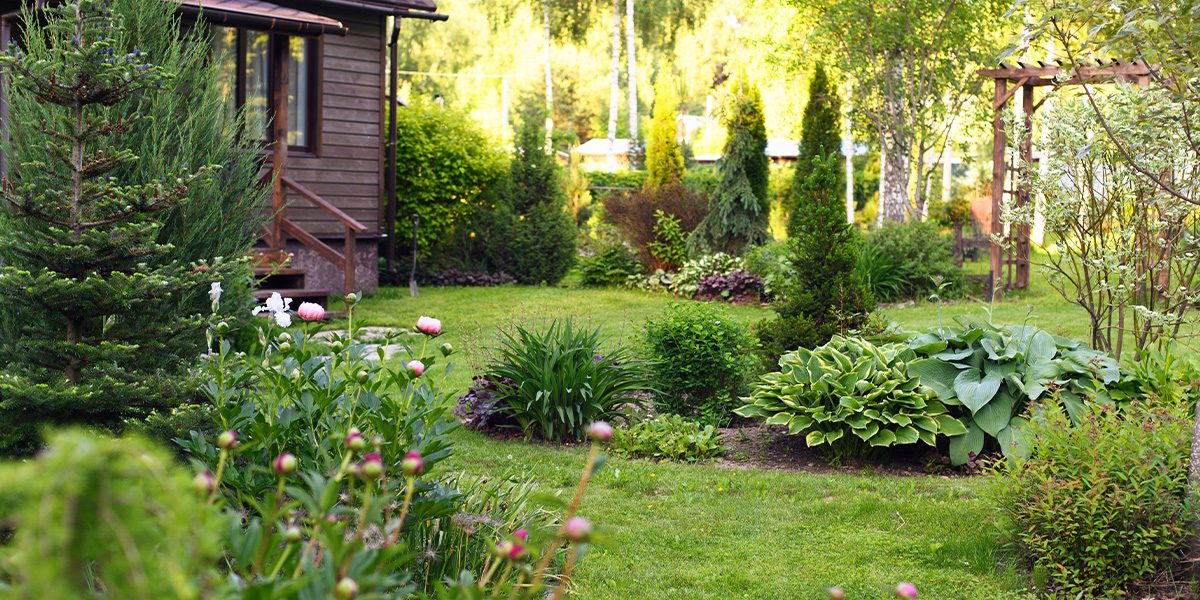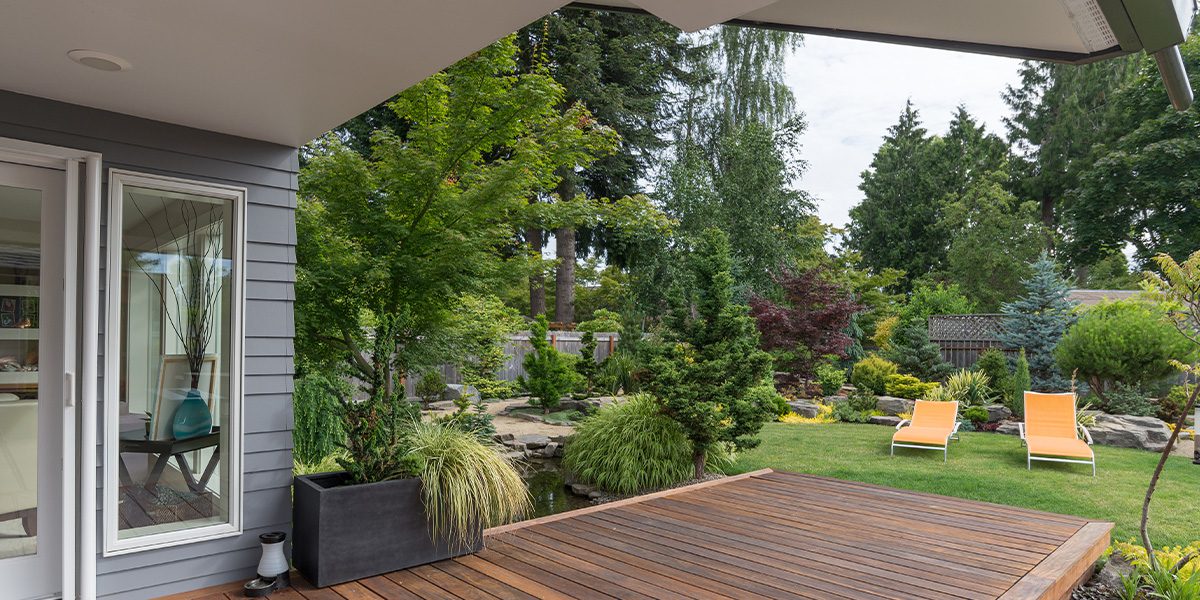A balanced garden is a balanced mind.
A balanced design is paramount in bringing a sense of equilibrium and peace that we long for in a garden. Symmetry is one method to bring balance into the garden, but it is not the only way. In fact, an asymmetrical design can also create harmony, if it’s done in a balanced way. In this article, you’ll learn what balance is and how to create it both in symmetrical and asymmetrical spaces!
What Makes a Garden Feel Out of Balance?
Have you ever been in a garden or park that makes you feel uneasy or off-kilter, almost like you’re sliding to one side of the yard or that something is missing. It’s easy to identify the sense that “something doesn’t feel right in this space,” but often it’s hard to pinpoint exactly what is making you feel that way. Underlying this feeling could be an unbalanced design—e.g. too many shrubs over there, not enough perennials over here, or a big driveway that’s throwing everything off.
The Key Understanding Balance: Weight
To create a balanced garden space, you need to consider each plant’s visual “weight.” The weight of a plant is how large of a presence it has in your landscape. Size is the most obvious factor that contributes to a plant’s weight, but it is not the only ingredient. In fact, there are three key elements of weight: size, color, and density.
- Size: In the most simple terms, size comes from the height and width of a plant. Bigger plants have a bigger presence, and hence a larger weight. Keep in mind that both vertical and horizontal dimensions contribute to weight. For example, a short but wide lilac could have the same overall weight as a columnar Rose of Sharon.
- Color: This also contributes to a plant’s weight in the landscape. Even if two plants are the same size, the darker color of one may give it a greater presence and thus make it appear to occupy more space. The rule is that darker colors have a greater weight in the garden than lighter ones. For example, a dark green juniper will have a larger weight than a light green pine of the same size.
- Density: This is the final factor that contributes to a plant’s overall weight in the garden. Plants with wispy, thin, and less dense branches have a lighter weight. Whereas, plants with thicker branches, and denser needles or leaves have a greater weight.
How Does Weight Create Balance?
To understand how weight contributes to a balanced space, just imagine your yard like a teeter-totter or old-fashioned scale. If you have a lot of heavy plants on one side of the yard, and lighter ones on the other, you’ll create an imbalance. Alternatively, if you have similar weights of plants on either side of the yard, the space will be in balance. Knowing this, we can now see that symmetry is not the only way to create balance. In fact, asymmetrical plantings can also create a sense of equilibrium, as long as you’ve balanced the different weights of plants.
How to Layout a Perfect Garden
Balance Through Symmetry in an Illinois Garden
Symmetry in gardens has been around since the classical and neo-classical times. Creating symmetrical plantings brings a sense of order and, in more elaborate gardens, even creates awe. Have you ever walked down a path of symmetrical elms reaching over on each side? Have you ever stood at a fountain with identical beds of lavender, lilies, and roses around you? These are the spaces that people want to have marriage ceremonies in. They bring balance, harmony, and a sense of perfection.
Balance Through Asymmetry in Illinois Garden
Fortunately, symmetry is not the only way to create a balanced space. If it was, then every garden besides formal ones would leave us with an uneasy, awkward feeling, but they don’t. Plenty of asymmetrical gardens create harmony and equilibrium. The key is to balance plantings with other plantings of similar weights. Here are some examples:
- Balancing Trees and Shrubs: try to imagine a space where a tall tree on one side of your yard is balanced by several dense shrubs on the other side. What kind of shrubs do you see? Perhaps a grouping of a dark juniper, a tall lilac, and medium-sized viburnum? Balancing plants is not an objective science. Use your own feel and judgment to decide what feels balanced in your space.
- Balancing Perennials: once you realize that not only size, but color and density contribute to weight, then you can be more creative in balancing perennials. Imagine four of your favorite perennials, for example, daylilies, coneflowers, yarrow, and garden phlox. Now, how would you balance these? Arguably, the daylilies have the greatest density and weight, followed by the phlox. You could pair the daylilies with the wispier yarrow, and the coneflowers with the phlox for a balanced look.
How To Create Balance Throughout the Winter
When the leaves come off the deciduous trees, evergreens remain in our garden spaces. To maintain a balanced look throughout the winter, it’s helpful to ensure that the evergreens are balanced against each other. Having a balanced space of evergreen trees and shrubs creates a harmonious skeleton to your yard that remains during the whole year.
A healthy garden goes a long way to fostering our own wellness at home, and balance is key to a harmonious design. For more inspiration on creating garden spaces, feel free to visit our garden centers in Bloomingdale and Carpentersville!
Platt Hill Nursery is Chicago’s premier garden center and nursery.






